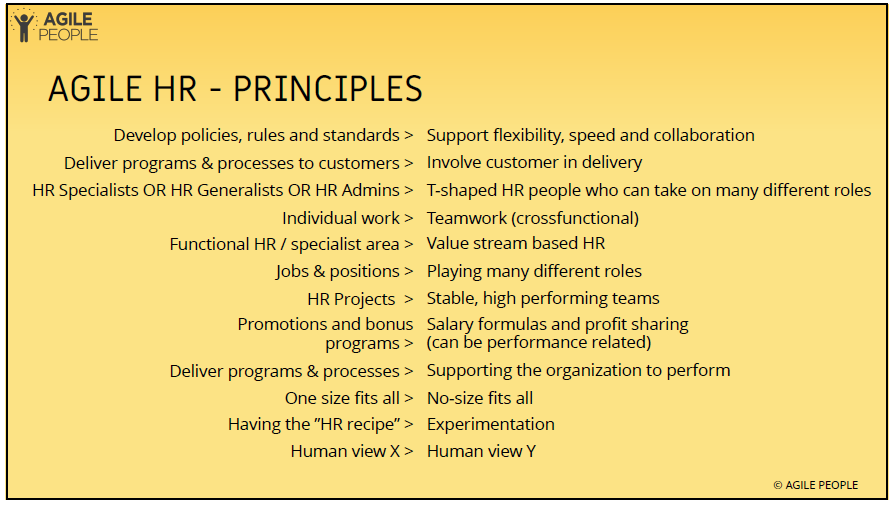It is easier if I start with stating what Agile HR is not – it is not just another HR fad or buzzword. Agile HR is now a global movement that is transforming the world of work. A recent survey by Deloitte of more than 10,000 businesses and HR leaders across 140 countries revealed that 94% report that “agility and collaboration” are critical to their organization’s success.
Furthermore, according to VersionOne’s State of Agile Survey, managing changing business priorities is the top benefit of agile, and 98% of respondents say their organization has realized success with agile.
According to a McKinsey report, agile companies have better overall organizational health than their non-agile counterparts.

Having agility in a business means having an individual and unique organisational structure which allows the organisation to respond rapidly to changes in the internal and external environment without losing momentum and competitive advantage. Adaptability, creativity and resilience are three qualities essential to long-term business agility. Innovation is often the key to long-term business success as companies that rely on best practice or ‘proven’ methods of doing things often find themselves falling behind the competition because they can’t adapt quickly enough to changes in the environment and business strategy.
From an HR perspective, and from a strategic point of view, HR’s role is to inspire and provoke new thinking by staying aware of context and trends and bringing this knowledge to all parts of the organisation.
HR plays a critical role in driving the people agenda and can drive agility in the business by ensuring employees have the skills and capability to respond quickly to changing business priorities and creating an infrastructure and processes that allow employees to re-group, re-focus and act quickly. Agility, in other words, means becoming nimble, able to move quickly and easily. For HR this means, transitioning from traditional ways of working to Agile ways of working by changing the focus from imposing controls and standards to empowering adaptability, innovation, and collaboration.
The history of the human condition is to seek relationships and form attachments with families and tribes. These groups self-organise and agree on rules to create a sense of safety and belonging, fight common enemies or accomplish something meaningful.
In a business environment, tribes are teams who are connected by managers. These teams share the same purpose and goals and are working towards the same common vision.
Agile way of working is taking us back to these natural principles and instincts of working in small teams who self-manage, have each other’s back (psychological safety), and work towards one common goal.
So what does this shift to Agile look like for HR? The HR departments that have evolved and those that add most value to the organization ensure the focus is on fostering a bottom-up approach, to encourage efficient communication and to empower employees to make decisions faster. Rigid plans, systems, and annual cycles don’t cut it anymore. HR must facilitate and support innovation and flexibility.
What is apparent in the above is the primacy of the employee - people and interactions are more important than processes, policies or rules. What’s more, the focus is on happy people rather than bureaucracy and rigid processes. The intention is to create a great working environment for employees and greater value for customers.
HR as an Agile Business Partner still has some way to go. However, as businesses become Agile they will require HR to fully embrace the same principles. And Talent Acquisition, Performance Management, Compensation and Benefits, Learning and Development as we know it now, will need to evolve to support the creation of small autonomous cross-functional teams, operating as part of a fluid network, rather than as a top down bureaucracy.